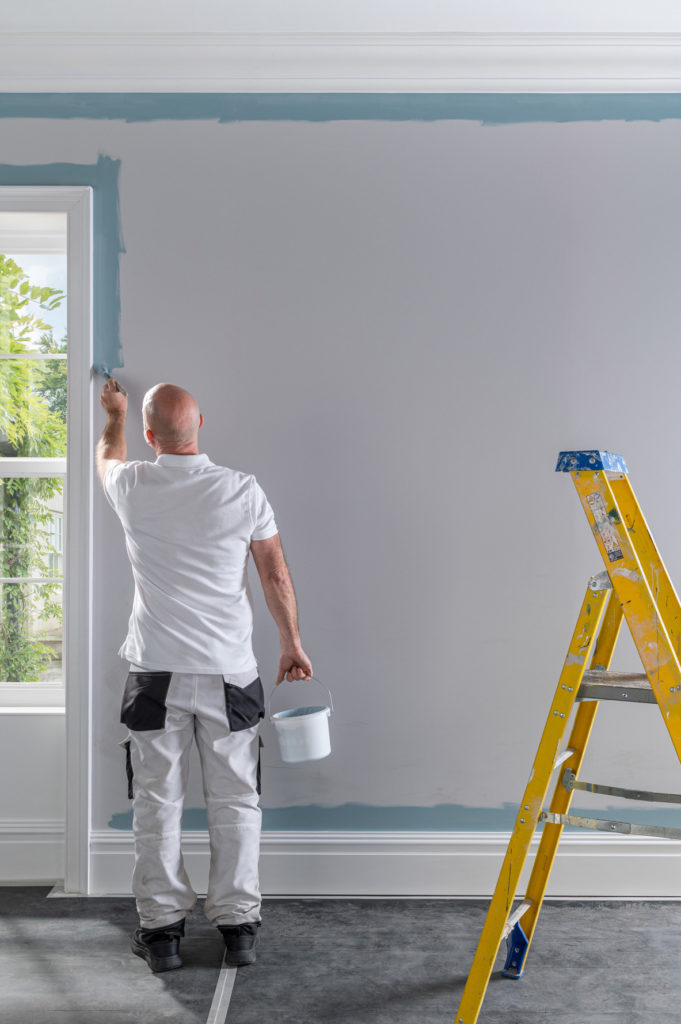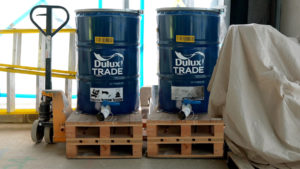Against the backdrop of the UK Government’s ambitious 2050 Net Zero targets, the concept of the ‘green premium’ associated with sustainable buildings is gaining significant momentum. Now more than ever, specifiers must prioritise sustainable solutions when upgrading properties. Peter Howard, Sustainability and CSR Lead at Dulux Trade, discusses the role that paint can play in sustainable upgrades.
Measures like ‘The Great British Insulation Scheme’ are an important step towards achieving improved sustainability as 17% of the UK’s carbon emissions come from heating homes. However, when retrofitting properties, it is important to think about every building material and its impact including paints and coatings.
Paints and coating play a vital role in protecting surfaces and reducing the need for regular emission including redecoration work. However, to make an even bigger difference, it is important to select pains that provide additional sustainability benefits.
 Low VOC, water-based paint
Low VOC, water-based paint
When choosing paint, it is important to select products with lower Volatile Organic Compound (VOC) content. VOCs are chemical vapours that are released into the air as the paint is applied and drying, VOCS contribute to the formation of greenhouse gases in the atmosphere, therefore adding to global warming and ground level pollution. Exposure to high VOC levels can also have negative effects on both the person applying the paint and householders once the redecoration work is completed. This means that spaces need to be well ventilated and unoccupied for longer.
Reducing VOC emissions is an easy switch; simply opt lower VOC water-based products instead of solvent-based paints. The high quality water-based paints available on the market today provide the same benefits typically associated with solvent-based alternatives including quicker drying times, easy application and a professional finish. This means that redecoration work can be completed quicker whilst also reducing environmental footprint and impact on indoor air quality.
For added reassurance of a paint’s sustainability credentials, specifiers should check that the products used comply with green building accreditations such as BREEAM (Building Research Establishment Environmental Assessment Methodology), LEED (Leadership in Energy and Environmental Design) and WELL or have an externally accredited EPDs (Environmental Product Declaration). Information covering all of Dulux Trade’s product certifications and accreditations can be found on Dulux Trade’s website.
Aiming for durability
Another way to reduce environmental impact is opting for durable paints that last longer and prevent the need for regular redecoration work. This plays a vital role in cutting carbon emissions and costs over a building’s lifetime, as when durable products are applied, they will help to extend maintenance cycles thus reducing material use and waste with the added benefit of reducing costs as well. Paints that protect walls against scuff marks, such as Dulux Trade Scuffshield are ideal for.
It’s also important that marks can easily be removed to maintain the professional finish for longer. This can help to ensure that tenants feel proud of their living spaces as they are able to keep their spaces looking new. Products like Dulux Trade Diamond Matt have been tested to withstand scrubbing and are therefore, recommended. The range is also resistant to water-based stains such as red wine and coffee, as well as oil-based stains such as food or cosmetics providing further durability.
 Reducing packaging waste
Reducing packaging waste
For larger projects that require a high quantity of paint, the use of conventional 10L paint cans can result in a significant amount of waste especially if the cans are not recycled. It is therefore important to select a paint suppler like AkzoNobel that offers larger, reusable 170L paint containers. These are ideal for bigger schemes, as they can be refilled throughout the duration of the project to ensure a consistent supply of paint on site all while improving sustainability and reducing waste. An increasing number of decorative merchants also offer free Can Recycling Services, helping to ensure empty packaging is recycled. Painting contractors can often simply hand empty packs over when collecting new material.
Overall, it is imperative that social housing providers work with painting contractors to ensure that the pains and coating used in their projects stand the test of time and reduce impact on the environment. Small and easy steps such as using durable, lower-VOC water-based paints, opting for larger paint containers or simply ensuring higher rates of recycling can all together to make a real difference.










